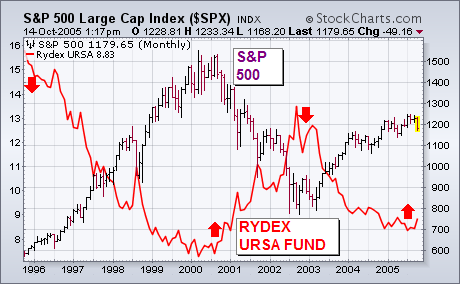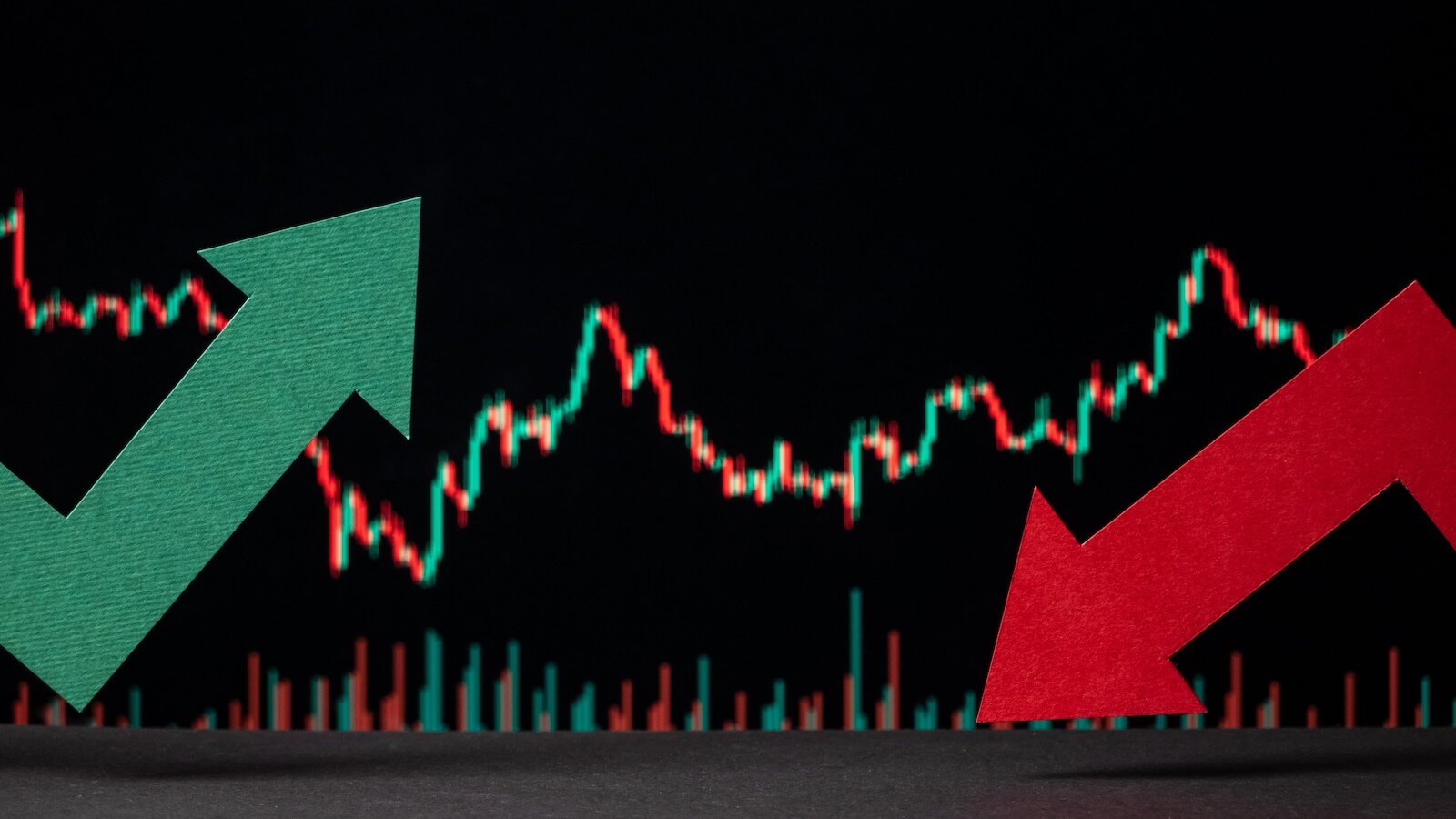My Wednesday message on bear funds wrote that they should be used as trading vehicles and not as a long-term investment. One of our readers asked why. That's because the market has a history of rising more often that it falls. To hold a bear fund in a rising market ensures unnecessary market losses. Since the start of 2003, for example, the bear fund would have lost 28% while the S&P 500 gained 34%. In other words, a bear fund would have been a bad holding over the last three years. The picture is even worse the further back we look. The chart below compares the S&P 500 monthly bars to the Rydex Ursa bear fund (red line) for the last ten years. The bear fund is designed to move in the opposite direction of the S&P 500. The bear fund fell from 1995 to 2000 as the market rose. After rallying from 2000 to 2002, it fell again from 2002 to 2005. That means that the bear fund fell for seven out of the last ten years and three out of the last five. It would have done a little better than the S&P 500 since 2000. But it would have lost a lot in the three years since 2002 and a lot more over the entire ten-year period. That's why it shouldn't be used as a long-term investment. A bear fund can and should be used, however, when the market looks like it may be turning down -- as it is now. In my view, that makes bear funds trading vehicles and not long-term investments.






